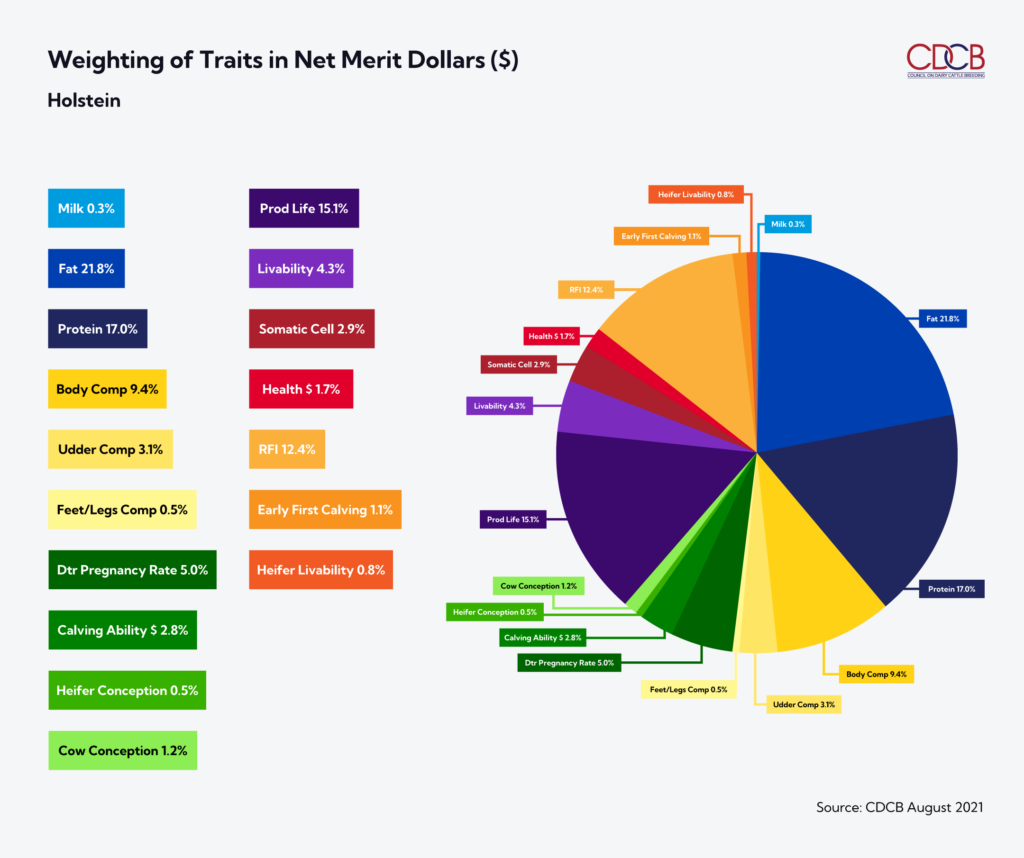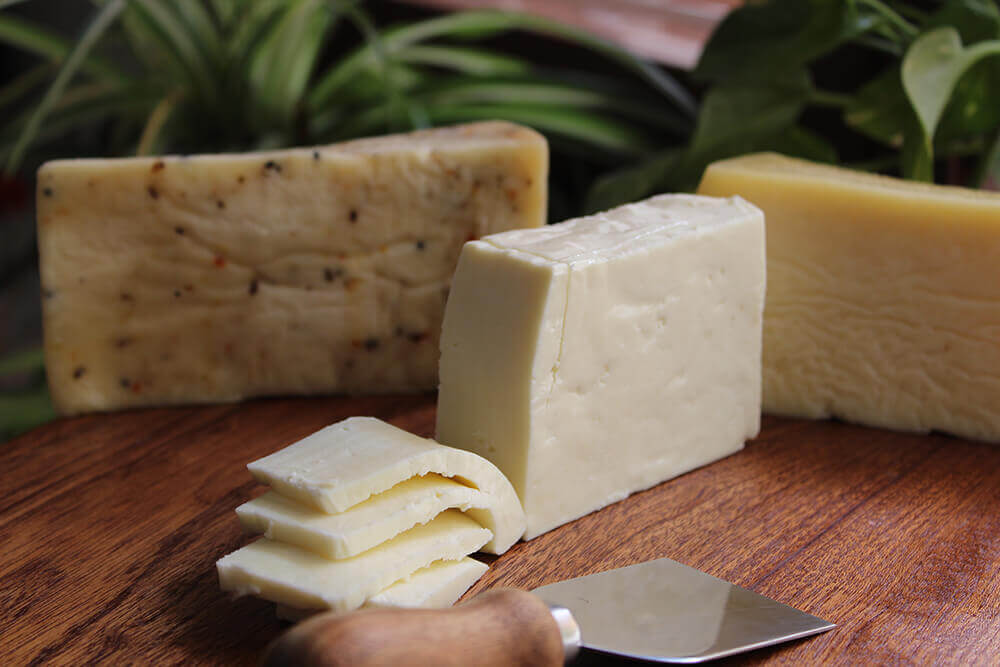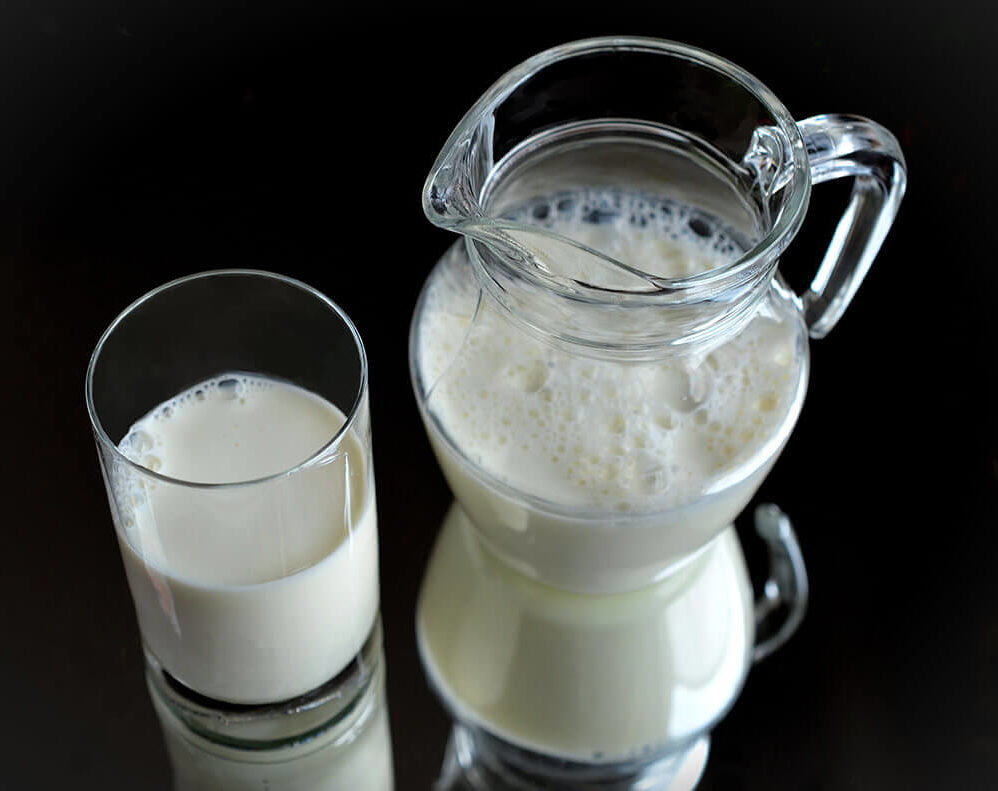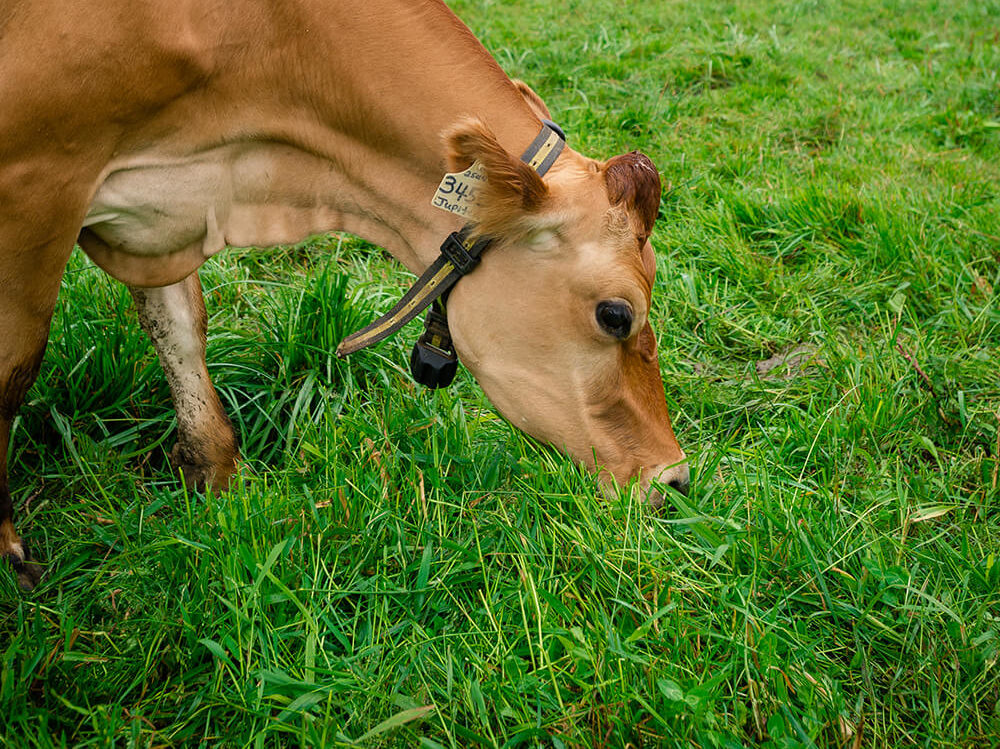Lifetime Net Merit $ (NM$) is the national selection index in the U.S. Net Merit predicts net profit over the lifetime of the animal’s average daughter, expressed in U.S. dollars. Net Merit ranks dairy animals through a formula that factors a combination of traits that are genetically and economically important to dairy herds.
The genetic contribution of several traits, like milk production, conformation, health and fitness, are factored into Net Merit. Traits are weighted based on their genetic impact on dairy farm profitability.
Net Merit was developed in 1994 by renowned USDA geneticists and is updated periodically with new traits and the latest research and economic values. Since 2021, Net Merit has included 39 individual traits for Holsteins. Not all traits are calculated for all breeds, so the Net Merit formula differs slightly between breeds.

The index, Lifetime Net Merit $, applies for most U.S. dairy herds and production systems. There are 3 variations of the index that predict profit potential in specific milk markets or situations.

Lifetime Cheese Merit $ is designed for herds that produce milk for cheese. Generally, Cheese Merit combines the same traits as Net Merit. The differences are a negative economic weight on PTA Milk and increased emphasis on Protein Pounds – because protein has more value in the cheese market than in other markets.

Lifetime Fluid Merit $ is designed for farms that sell milk into the fluid market. While Fluid Merit combines all the same traits, there is considerably more weighting on PTA Milk. Protein has no influence in Fluid Merit, reflecting milk pricing in those markets.

Lifetime Grazing Merit $ was developed for pasture-based herds using intensive grazing. While Grazing Merit includes the same traits, there are different economic values to reflect this specific management approach. Primary differences are higher value of fertility to maintain seasonal calving, along with modifications in production yield, longevity, livability and udder health.
Genetic indexes are updated periodically to add traits, incorporate new research and reflect current economics.
Net Merit was introduced by USDA in 1994, as an index that combined the familiar production and type traits with two new traits, Productive Life and Somatic Cell Score. This new index blended fitness, conformation, and production – unique to indexes in most countries at the time.
Net Merit has been updated as new traits became available:
Since 2021, Net Merit has combined 39 individual traits for Holstein animals. In 2021, three new traits were added to help breed cows that are more (feed) efficient: heifer livability, early first calving and residual feed intake . Economic values for all traits were re-evaluated and updated where needed.
In August 2020, the trait weightings in Net Merit were slightly adjusted in connection with the new phenotypic base for calving traits. Four calving traits – Sire Calving Ease, Daughter Calving Ease, Sire Stillbirth and Daughter Stillbirth – are included in Net Merit $ through a calving ability index (CA$).
As new traits are developed, Net Merit – and other selection indexes – will continue to evolve to include the most current and relevant research and economic values.
Most U.S. breed associations have created customized indices to address the breeding goals set by the breeders.